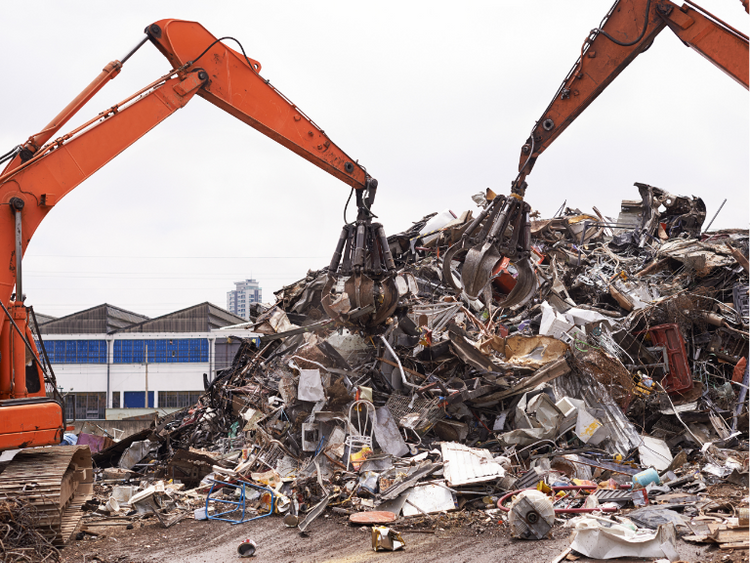Product

October 11, 2018
Leibowitz on Trade: 'Country of Origin' Rules Complex
Written by Tim Triplett
Lewis Leibowitz, trade attorney and contributor to Steel Market Update, offers the following commentary on the latest developments in Washington:
A question came up this week about production and changing tariff codes for products to avoid or minimize tariffs. Understanding options depends on the issue of how tariff classifications are changed through processing. And if they are changed, whether the “country of origin” will also change.
- The steel and aluminum Section 232 tariffs apply to specific products, but most countries (counting the quota deals with Argentina, Brazil and South Korea, they apply to all countries except Australia).
- The Section 301 tariffs apply to many products (and could soon apply to nearly all imports from China), but only to products “originating” in China.
A product “originates” in a country when it is entirely the “growth, product or manufacture” of that country. Or, if the product has components and inputs from more than one country, the last country before importation into the United States where it was subject to “substantial transformation.” Substantial transformation means processing that results in a new and different article of commerce, with a different name, character or use different from the components.
Let’s consider a quick (and oversimplified) example: A car has galvanized steel sheet from China, an engine from Japan and tires from Thailand. It is assembled into a car in Germany. The carmaker can claim that the car “originated” in Germany because the components have been “substantially transformed” in Germany. The steel in the car, even though it is a product covered by the steel Section 232 tariffs, will not be taxed by the United States under Section 232 or 301 tariffs because it is not steel when it gets here—it is part of a German car.
Many companies are looking at their options as to where they manufacture goods as a means to minimize their tariff exposure. In doing so, they need to consider the nature of the tariffs, quotas or other restraints and whether “substantial transformation” will help or hurt their case.
Consider the following trade restraints:
- Country of Origin marking: U.S. Customs and Border Protection determines whether a substantial transformation takes place requiring that the country of origin be marked on the product.
- Country of origin for trade remedies: Customs also determines country of origin, but the agency imposing the tariffs (USTR for Section 301 tariffs and 201 tariffs, Commerce for Section 232 tariffs) has a say in the determination. The language of the presidential Proclamations could also be important in this determination.
- Antidumping/countervailing duties: The Commerce Department determines whether a product “originates” in a particular country through a substantial transformation analysis. Commerce does not necessarily follow Customs in determining whether substantial transformation has taken place. In many AD/CVD cases, Commerce goes a different way from Customs and often determines that a product originates in a country subject to an AD/CVD order rather than a country not subject. The recent Vietnam circumvention cases on cold rolled and corrosion resistant steel did not employ a substantial transformation analysis, but plaintiffs in pending cases are arguing that they violated the law by not doing so.
- Section 301 tariffs: Companies can do enough processing in a third country on Chinese production inputs to make the origin the third country instead of China. This could exclude the processed product from China 301 tariffs when the processed product enters the U.S.
The minimum processing for a substantial transformation will vary in each scenario. There is no single standard that applies in all situations, although the WTO Agreement on Rules of Origin contemplated a single test for each country. The WTO negotiators could not come up with a universal rule of origin, so the substantial transformation test remains subject to widely varying interpretations.
Another complication: For Free Trade Agreements, such as NAFTA, origin is determined under special rules that vary with each agreement. Certain products are of vital importance in agreements with some countries (e.g., automotive rules of origin in NAFTA), but are given almost no attention in other FTAs (the automotive rules of origin in the U.S.-Morocco FTA are very simple). The rule in NAFTA and most other free trade agreements is “tariff shift.” That means that the agreements say if the inputs are Tariff Classification X and they are changed to Tariff Classification Y by processing, then the goods originate in the country where the tariff shift occurred.
There are endless controversies and almost endless opportunities to reduce (or increase) tariff liability in the new world of tariffs. With retaliation by our trading partners, the same strategies may be useful to U.S. companies that export.
We are cursed to live in interesting times.
Lewis Leibowitz
The Law Office of Lewis E. Leibowitz
1400 16th Street, N.W.
Suite 350
Washington, D.C. 20036
Phone: (202) 776-1142
Fax: (202) 861-2924
Cell: (202) 250-1551







